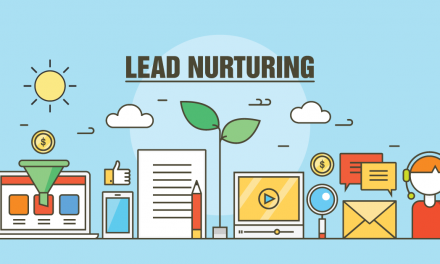There is a seemingly endless supply of online lead providers for real estate agents in 2020. With the number of online lead options out there, it is almost impossible for real estate agents to find a reliable source. Particularly, when you consider the cost of trial and error on your annual budget. And that’s just the first obstacle. After you finally decide on an option, getting a response from the leads you purchased can be so frustrating and time-consuming that many agents even question the point of their investment. In this article, we’re going to look at why you don’t need online leads for your real estate business.
You do not need online leads because most sellers and buyers find realtors through referrals. IXACT Contact reports that 82% of all Real Estate transactions come from repeat and referral business. Eighty-two percent! So while agents are pouring money into these “high-quality leads”, they’re really targeting only a small percentage of the market.
On top of this, you do not need online leads as 92% of Consumers trust recommendations from friends and family above all other forms of advertising. Think about that for a minute. If the majority of transactions, come from repeat and referral business and over ninety percent of people will trust recommendations of people they know, rather than advertising, why would you want to invest in buying leads?
There is no existing connection to the person. You’re chasing them from the point you get their contact information. They’re likely to trust what their friends and family say more than what they see about you online. Buying online leads is really just chasing after a smaller pool of potential clientele.
Reasons why you shouldn’t buy online leads
- Most people don’t respond to emails if it is not relevant. Your first email could even be labeled as spam diminishing your chances of the lead seeing your future emails.
- Cold-calling leads is not usually productive. It takes an average of six calls before you’re able to sell your service.
- Often, you find the lead is a “lookie-loo”. E.g. A homeowner who submitted their contact information, just to get a rough idea of their home’s worth. A “lookie-loo” is the window shopper of the real estate world.
- You’ve got to be the first person to contact them as 78% of leads that convert, do so with the first responder.
- You have at most 5 minutes to respond to the lead. If you respond outside of that time, the chances of the lead already having spoken with another agent are very high.
- Sales conversions decrease by 391% after the first minute. That’s right, the first 60 seconds!
- No guarantee that the lead was a recent submission. Always check the fine print.
- On top of that, there is no guarantee of exclusivity. Unless specified by the lead provider there will be other agents competing over the same contact information.

Alternatives to online leads
In real estate, there are agents that are chasing a transaction, and those who are building a business. Chasing a transaction is when you are in it for the deal, the transaction, or the commission. You’re either working with a client or looking for your next immediate result. Typically agents that are chasing a transaction have zero follow-up, too. The reason? It’s all about “what can this person do for me, right now”.
Whereas agents that are focused on building a business typically don’t buy or need online leads. They’re building a sustainable network of trusting relationships, which they will serve, and will serve them. These agents, are playing the long game. While it can bring immediate results, the thinking behind this strategy is continually positioning yourself in the minds of the people you meet as you never know when they or anyone they know are going to be buying or selling.
Now, to use this strategy effectively, you’ve got to ensure your targeting the right area (and the people within it). A core element of this is to calculate the Turnover and Absorption Rate of the community, town, or neighborhood.
The Turnover Rate is the estimated rate in years, that the market will cycle through. For example, if an area has 1000 homes and 100 were sold last year (10%) you could expect that it would take 10 years for 1000 homes to sell. Now, it might not be that every single home in that community has sold within that time (as some will sell multiple times within those 10 years. Others not at all). It gives the agent insight when comparing areas.
The Absorption Rate of an area is a little different. This looks at how many people in the area are likely to move. This number is particularly useful when looking at the opportunity of any farming areas that you are considering targeting.
Conclusion
The cost-benefit analysis of buying leads, just simply doesn’t match up favorably with the desired results. For any agent, don’t buy online leads. Focus on where you can invest your marketing dollars so that you are able to take advantage of buyer and seller behavior. Remember, 82% of all real estate transactions come from repeat or referral business. Target creating new relationships in your community in 2021.
If you’re looking for alternatives we highly recommend investing your time in connecting with business owners in your community. Not only does this provide you with opportunities to prospect, but it also gives you an opportunity to connect with the homeowners in your community on a deeper level. Building true relationships, rather than a cold call (which they’re not likely to answer).
However, if you’re looking to take it a step further. Why not become the go-to connector in your community?






